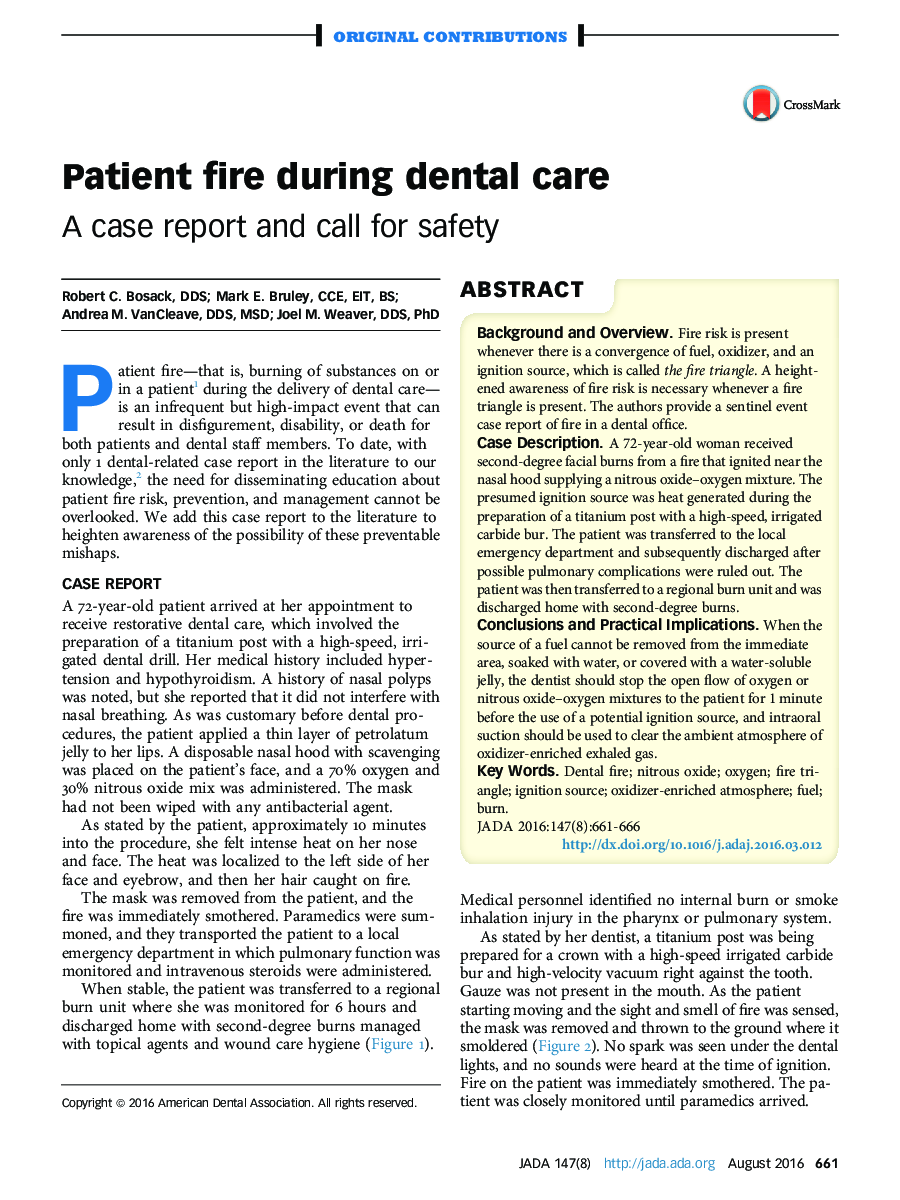| کد مقاله | کد نشریه | سال انتشار | مقاله انگلیسی | نسخه تمام متن |
|---|---|---|---|---|
| 3136523 | 1584963 | 2016 | 6 صفحه PDF | دانلود رایگان |
Background and OverviewFire risk is present whenever there is a convergence of fuel, oxidizer, and an ignition source, which is called the fire triangle. A heightened awareness of fire risk is necessary whenever a fire triangle is present. The authors provide a sentinel event case report of fire in a dental office.Case DescriptionA 72-year-old woman received second-degree facial burns from a fire that ignited near the nasal hood supplying a nitrous oxide–oxygen mixture. The presumed ignition source was heat generated during the preparation of a titanium post with a high-speed, irrigated carbide bur. The patient was transferred to the local emergency department and subsequently discharged after possible pulmonary complications were ruled out. The patient was then transferred to a regional burn unit and was discharged home with second-degree burns.Conclusions and Practical ImplicationsWhen the source of a fuel cannot be removed from the immediate area, soaked with water, or covered with a water-soluble jelly, the dentist should stop the open flow of oxygen or nitrous oxide–oxygen mixtures to the patient for 1 minute before the use of a potential ignition source, and intraoral suction should be used to clear the ambient atmosphere of oxidizer-enriched exhaled gas.
Journal: The Journal of the American Dental Association - Volume 147, Issue 8, August 2016, Pages 661–666
